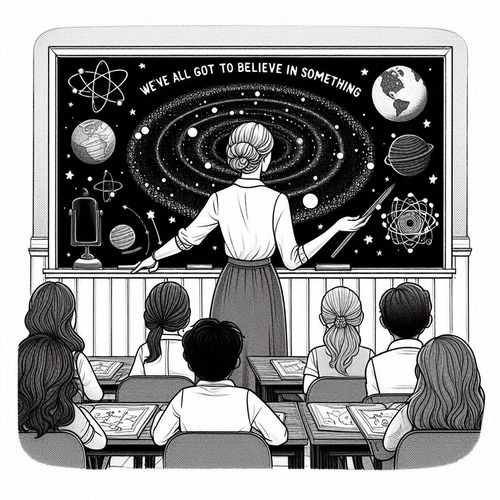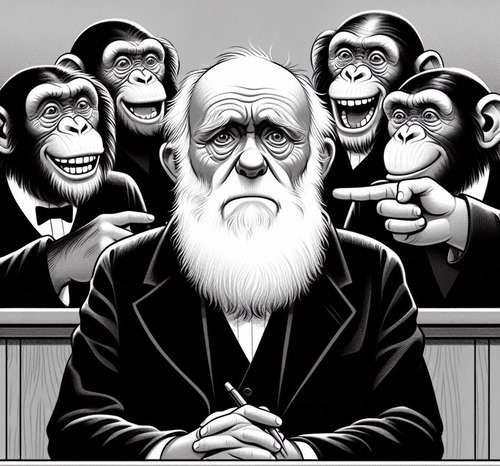The Human Eye: A Masterpiece of Engineered Precision
Imagine holding the most advanced camera ever created. Now, multiply its sophistication by a thousand—and you might begin to approach the breathtaking complexity of the human eye. This remarkable organ is far more than a simple imaging device; it’s a masterpiece of intricate engineering that challenges our understanding of biological development.
THE ANATOMY OF A VISUAL MARVEL
The human eye is an architectural marvel, with each component meticulously designed to work in perfect harmony. Let’s explore the remarkable structural and biomechanical features that make this organ a masterpiece of biological engineering:
Structural Perfection
- Precise Optical Architecture: The eye’s structure is an optical marvel that surpasses manmade cameras in complexity and efficiency. Its carefully curved cornea and precisely shaped lens work together to focus light with an accuracy that would challenge the most advanced optical engineers.
- Layered Retinal Complexity: The retina is not a simple flat surface, but a multi-layered, intricate network of cells arranged with mathematical precision. Each layer serves a specific function, from capturing light to initial image processing, with photoreceptors positioned so precisely that even a slight misalignment would render vision impossible.
- Protective and Adaptive Mechanisms: The eye comes equipped with multiple protective features, including eyelids, tear production, and rapid healing capabilities. These systems work continuously to maintain the delicate balance of protection and functionality, shielding the sensitive internal structures while remaining transparent and responsive.
Biomechanical Engineering
- Dynamic Muscular Coordination: The human eye moves with an extraordinary level of precision, controlled by six extra-ocular muscles that allow for instantaneous, smooth movement. These muscles can rotate the eye with microscopic accuracy, enabling tracking of objects with a speed and precision that would require complex robotic systems to replicate.
- Adaptive Lens Mechanism: Unlike manufactured optical systems, the eye’s lens can change shape instantaneously, adjusting focus from distant objects to close-up details in milliseconds. This dynamic focusing ability, controlled by the ciliary muscles, occurs approximately 100,000 times a day without conscious effort, demonstrating an incredible biomechanical adaptation.
- Fluid Dynamics and Pressure Regulation: The eye maintains a precise internal environment through a complex system of fluid production and drainage. The balance of aqueous humour provides not just structural support, but also nutrition to avascular eye structures, while maintaining optimal internal pressure crucial for proper functioning.
- Neural-Mechanical Integration: The eye’s movements are seamlessly integrated with neural systems, allowing for unconscious tracking, stabilisation, and rapid response to visual stimuli. This integration involves complex feedback loops between muscular movement, sensory input, and neural processing that far exceed the capabilities of human-engineered tracking systems.
Each of these anatomical features represents a level of design so intricate that it challenges the notion of accidental development. The human eye stands as a testament to purposeful, sophisticated engineering that continues to inspire scientists and engineers alike.
THE BIOCHEMICAL MIRACLE OF SIGHT
At the molecular level, the eye’s complexity becomes even more astounding. Photoreceptor cells contain specialized proteins called opsins that transform light into electrical signals with near-perfect efficiency. The rhodopsin molecule, found in rod cells, can detect a single photon—a level of sensitivity that borders on the miraculous.
Consider the biochemical cascade that occurs when light hits these receptors:
- Photons trigger a molecular change in rhodopsin
- This change initiates a precise chemical reaction
- Electrical signals are generated and transmitted through the optic nerve
- The brain instantly interprets these signals as visual information
This entire process happens in less than 100 milliseconds—faster than you can blink.
BEYOND RANDOM CHANCE: A MATHEMATICAL PERSPECTIVE
The probability of such a complex system emerging through random mutations is astronomically small. Each component of the eye requires multiple precisely engineered elements to function. Remove or slightly alter any single element, and the entire system fails.
For instance:
- The cornea must have exactly the right curvature
- The lens must be perfectly transparent
- Photoreceptors must be positioned with microscopic precision
- Neural pathways must be perfectly mapped
COMPARATIVE INSIGHTS: NATURE’S DIVERSE DESIGNS
Different species showcase unique eye adaptations that suggest intentional design rather than random evolution. The eagle’s eye contains nearly twice as many photoreceptors as a human eye, allowing for extraordinary long-distance vision. The mantis shrimp possesses up to 16 colour receptors compared to our three, perceiving a spectrum of colour we can’t even imagine.
These variations point to a sophisticated, purposeful approach to visual design—each adaptation precisely tailored to an organism’s specific environmental needs.
TECHNOLOGICAL COMPARISONS: NATURE OUTPERFORMS HUMAN ENGINEERING
Even our most advanced cameras pale in comparison to the human eye:
- While a top-tier camera may have 50 megapixels, the human eye effectively processes an equivalent of 576 megapixels
- Our eyes can adjust to light conditions 1,000 times faster than the best camera apertures
- The eye consumes minimal energy—about 0.001 watts—compared to our electronic devices, all of which, without exception, are energy-hungry
CONCLUSION: A SYSTEM BEYOND COINCIDENCE
The human eye represents a convergence of biological engineering that defies explanation through random processes. Its complexity, precision, and adaptive capabilities suggest something far more intentional—a masterpiece of design that continues to challenge our understanding of biological systems.
Each blink, each moment of vision, is a testament to an extraordinary system that transforms light into meaningful perception with a sophistication that our most advanced technologies can only dream of replicating.
THE HUMAN EYE: RELATED FAQs
How many colours can the human eye actually see? The human eye can distinguish approximately 10 million different colours, a feat far more impressive than most digital imaging systems. The incredible colour perception comes from three types of cone cells in the retina, each sensitive to different wavelengths of light, working in complex combination to create our rich visual experience.
- Do eyes really continue growing throughout life? While the eye doesn’t grow to the same extent as other body parts, it does change subtly over time. At birth, the human eye is about 70% of its adult size, reaching full size around age 13, and then experiencing gradual changes in lens flexibility and corneal shape throughout adulthood.
- Can the human eye heal itself? The cornea is remarkably self-healing, capable of repairing minor scratches and abrasions within 24-48 hours. This rapid healing process is thanks to specialized stem cells at the cornea’s edge, which can quickly regenerate damaged surface tissues without scarring in most cases.
How fast do eyes move? The human eye can move incredibly quickly, with saccadic movements reaching speeds up to 900 degrees per second. These rapid, precise movements occur so fast that the brain actually suppresses visual input during the movement to prevent motion blur, a phenomenon called saccadic suppression.
- Are there any unique genetic variations in human eye capability? Some individuals possess a rare genetic variation called tetrachromacy, allowing them to see up to 100 million colours—far beyond the typical human colour range. This condition results from a unique genetic mutation that provides an extra type of cone cell, creating a dramatically expanded colour perception.
- How much information does the human eye process? The human eye transmits visual information at approximately 1 million bits per second, comparable to a high-speed internet connection. This massive amount of data is processed almost instantaneously by the brain, with most visual interpretation happening before we’re even consciously aware of what we’re seeing.
What makes human eyes unique compared to other species? We have forward-facing eyes with excellent depth perception, a characteristic of predatory animals. Unlike many species, our eyes lack protective coverings like those found in reptiles or birds, instead relying on eyelids and tear production for protection and lubrication.
THE HUMAN EYE: OUR RELATED POSTS
- The Ankle and Feet: A Miracle of Precision Engineering
- Our Consciousness and Rationality: Is God the Best Explanation?
- DNA Evidence for Intelligent Design: New Challenges for Evolution
- Human Immunology: Evidence of Design in Our Defence Systems
- Nature’s Ultimate Computer: The Human Brain Defies Evolution
- Our Consciousness and Rationality: Is God the Best Explanation?
Editor's Pick

‘What Sorrow Awaits You Who Are Rich…’: What Does Jesus Mean?
The words hang in the air like a sword over comfortable Christianity: “What sorrow awaits you who are rich, for [...]

Does the Bible Clearly Teach the Deity of Christ?
Critics argue Jesus never explicitly claimed to be God. Others suggest the doctrine emerged centuries later through philosophical speculation. But [...]

The Holy Spirit’s Indwelling: How Can I Be Sure I Have It?
“Am I truly saved? How can I know for certain that the Holy Spirit lives within me?” If you’ve wrestled [...]

Did Mary Remain a Virgin? A Biblical Case Against Perpetual Virginity
The question of Mary’s perpetual virginity has divided Christians for centuries. While Catholic and Orthodox traditions affirm Mary remained a [...]

Is Occam’s Razor a Compelling Argument Against Theism?
WHY THE ARGUMENT ACTUALLY POINTS TO GOD Picture this: You're in a coffee shop debate with a confident sceptic [...]

Is the Doctrine of Justification in the Old Testament?
WAS PAUL INVENTING SOMETHING NEW OR REVEALING SOMETHING ANCIENT? Picture this scene: You’re discussing faith with a thoughtful sceptic who [...]

How God Reveals Himself to Us: General and Special Revelation
Every human heart carries an undeniable longing to know ultimate truth—to understand our place in the universe and the longing [...]

Doctrine of God and Bible Interpretation: Are The Two Connected?
Picture this: Two seasoned pastors read the same verse about God's sovereignty and human responsibility. One concludes God determines all [...]

What Did Jesus Mean: ‘I Bring Not Peace But a Sword’?
Jesus’ statement may sound perplexing to us at first read: "Do not think that I have come to bring peace [...]

The Beatitudes: The Nine Marks of Those Jesus Calls Blessed
When Jesus climbed that hillside in Galilee and began to speak, He turned the world's understanding of blessing upside down. [...]
SUPPORT US:
Feel the Holy Spirit's gentle nudge to partner with us?
Donate Online:
Account Name: TRUTHS TO DIE FOR FOUNDATION
Account Number: 10243565459
Bank IFSC: IDFB0043391
Bank Name: IDFC FIRST BANK






